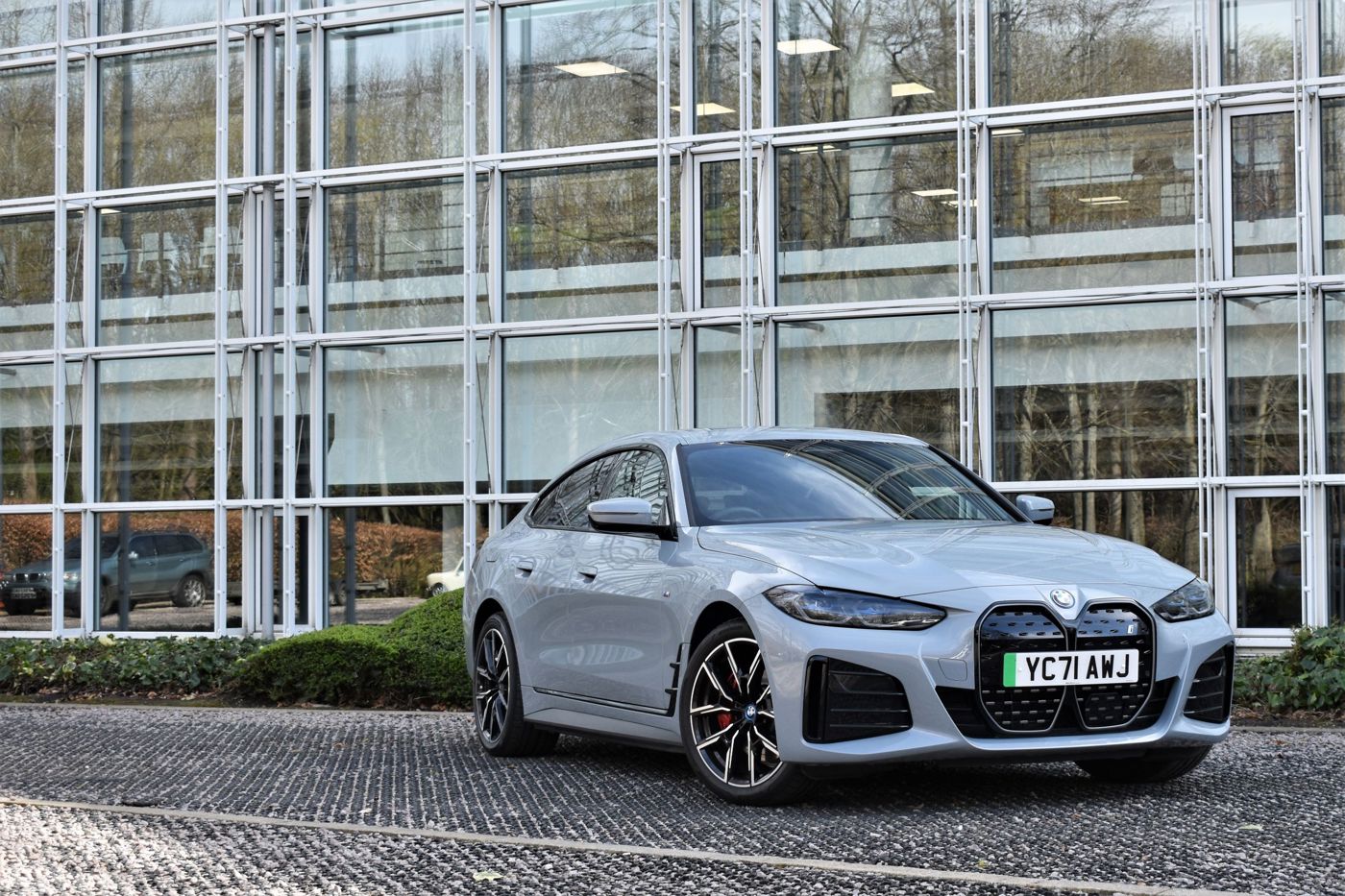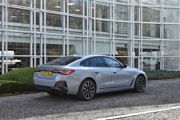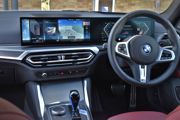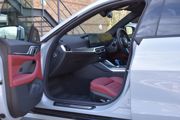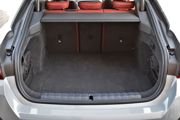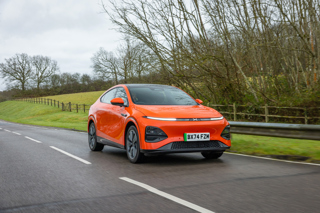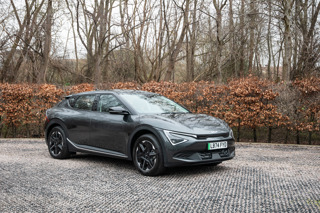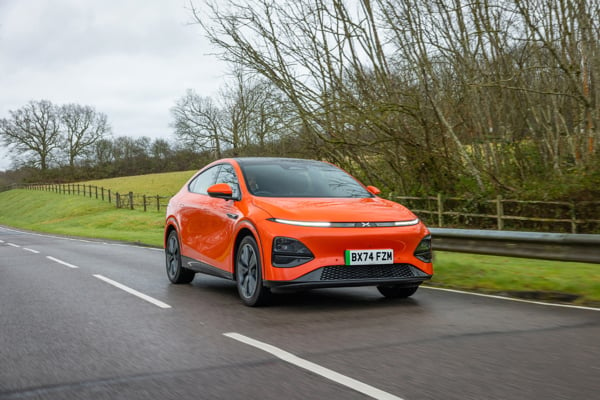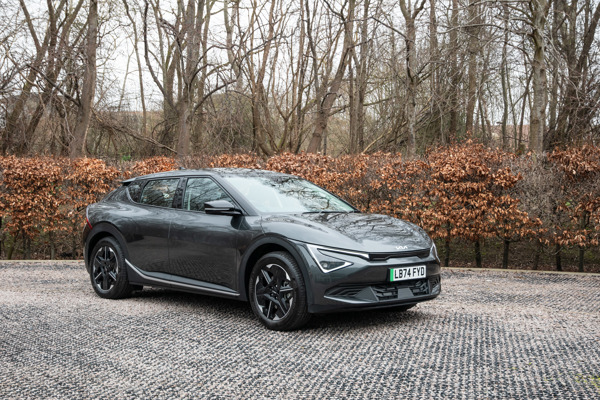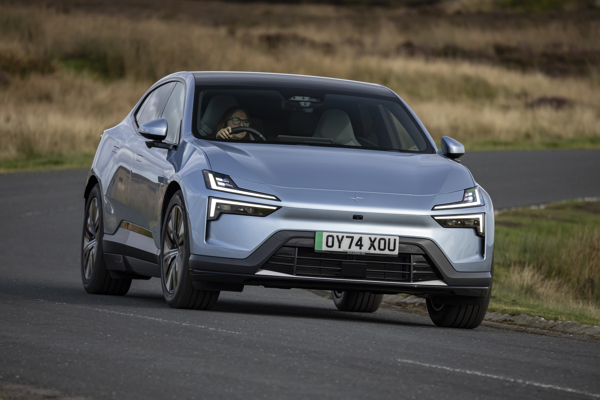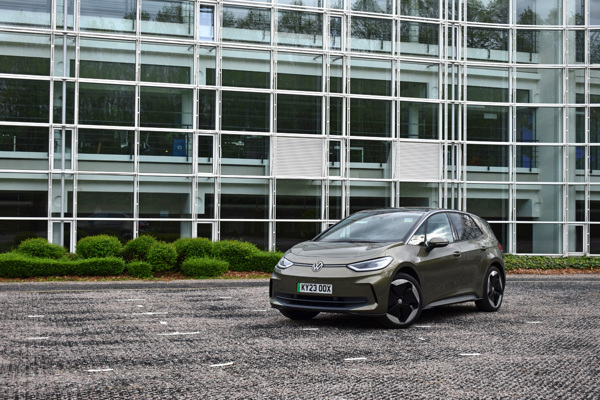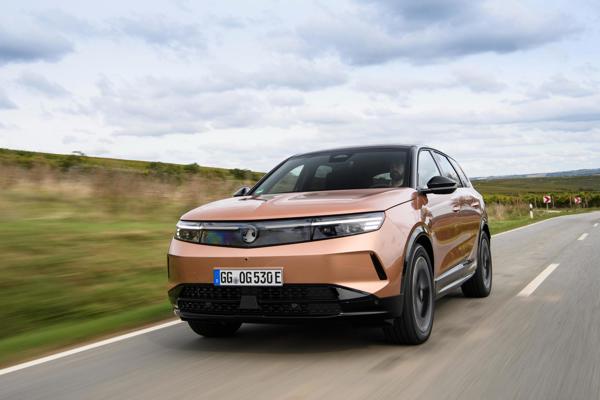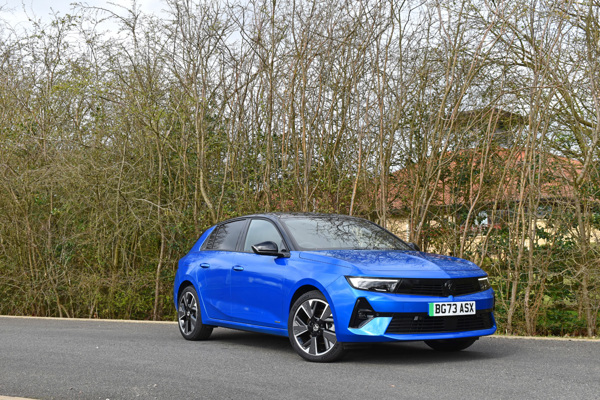Review
After six months of daily driving, the BMW i4 has cemented my opinion that it’s the best electric car currently on sale.
We went into our test to see if the i4 could offer a true ‘no compromise’ experience for someone coming from an internal combustion engine (ICE) car, and the reality is it’s much better.
The first thing that makes the i4 so impressive is how familiar it feels. Even though it started life as an ICE, there’s no impact on the driving position or day-to-day practicality. The switchgear, infotainment and general operation is exactly as you’ll find in any other BMW.
When it comes to the driving experience, we’ve not driven any electric car that is this well-honed for the money.
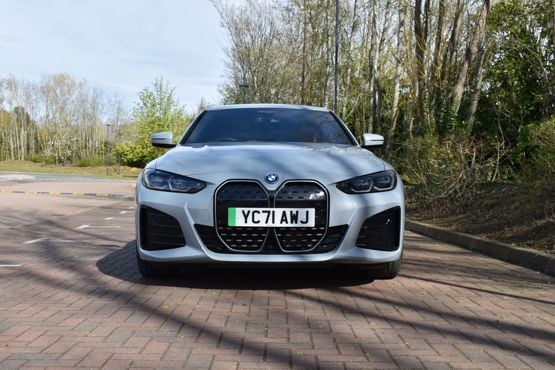
A lot of electric cars lack the visceral experience of an engine, giving a slightly benign feel. In the i4, a specially prepared sound is played into the cabin that adds an extra layer and adapts to the way you use the accelerator pedal, just like an engine would. It might sound a bit gimmicky, but it does work.
We’re pleased to report that range anxiety has been a total non-issue. In six months we covered 6,000 miles in the car, with a long-term average consumption of 3.6mi/kWh. With the battery’s usable capacity of 80kWh, that means a realistic range of almost 290 miles per charge was achieved.
In practice, we’ve managed to break the elusive 300-mile mark on more than one occasion and, what makes this more impressive is, we’ve not really made any attempt to drive the i4 efficiently, because it’s really not necessary.
We’ve been hard-pressed to find fault with the i4; it really does make an excellent all-rounder. The only point that’s worth making is it’s perhaps a little on the small side for families. While the hatchback aids practicality, the doors are quite small and interior space is cramped when you’ve got three passengers on board.
The i4 is eye-catching, well made, exciting and represents good value for money. It’s not just a good electric car, it’s a good BMW – full-stop. And praise doesn’t come much higher.
Cheaper than it looks
A few months ago I told you that everyone I met wanted to know the range of the i4. Well, the second thing they want to know is the price.
“They start at 53k, but this one is around 60 with options,” I say.
To my surprise, almost everyone I’ve said that too has thought it was cheap. One person even guessed that it was “around 80-90 thousand”.
It’s easy to see why. The sleek body looks classy. It’s understated, too. Other than the controversial grille – which is growing on me, by the way - the i4 is really rather pretty.
Stepping inside, the low seating position and large wraparound digital displays provide a class leading cabin. Admittedly it’s a little cramped, but the overall experience is leaps and bounds ahead of some other electric cars in this segment.
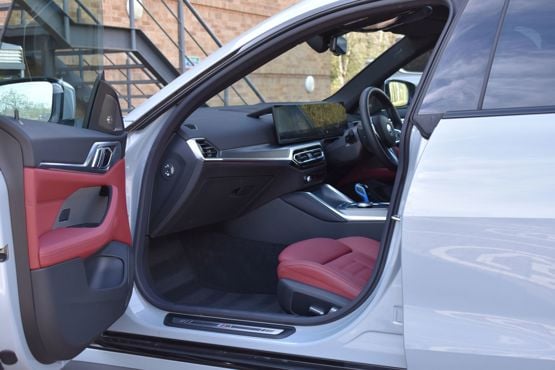
The i4 isn’t particularly expensive for what it is, then. Its 300+ mile capability, combined with its driver-focussed character make it highly appealing.
But, £60,000 is still a significant amount of money for a car and at current leasing prices the i4 will only be available to those with an £8,000+ per year allowance.
Of course, the savings made by the driver are significant. A high-spec eDrive40, like our car, will cost those in the 40% tax bracket less than £40 per month in benefit-in-kind tax.
When it comes to fuel costs there are further savings to be made, when compared to a diesel or petrol car. A full charge in the i4 costs about £27 at the October domestic electricity price cap rate. That’ll give you 300 miles of driving, which could cost more than double in a diesel.
When using a public rapid charger, however, 300 miles worth of charge would cost £52. It seems convenience still comes at a price.
Latest iDrive system is best yet
Infotainment systems have been the cause of much controversy in recent years, from the way they’re controlled to how much of the car’s features they encompass. A bad system can literally ruin an otherwise decent car.
BMW was at the forefront of this controversy when it introduced iDrive, back in the early 00s. The first-generation system was condemned, at the time, as fiddly, distracting and slow. The brand even mocked it in a Superbowl ad for the iX, last year.
Eight generations later and iDrive is now one of the best in the business. It’s still controlled by a rotary knob, in the i4, but has gained touchscreen and voice assistant technology too. For the first time, climate controls have been swallowed up into iDrive, making room for a giant screen.
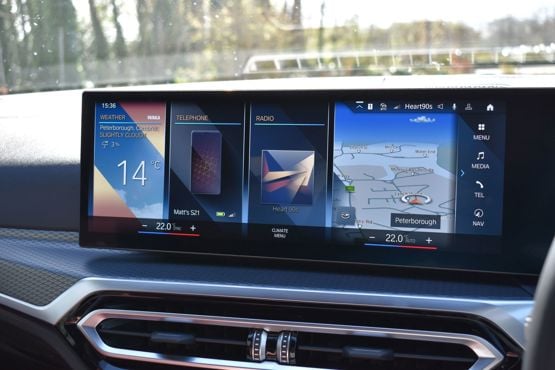
The user interface is superb. It has crisp graphics, fast response, and an easy-to-navigate layout. A permanent internet connection means the system is always up to date with the latest traffic alerts, EV charger locations and even weather reports.
As we’ve found with most new cars, of late, the system isn’t entirely glitch free. The first hiccup we encountered was a lack of sound from the radio, which lasted an entire journey. When I plugged the car in to charge it refused to take on power and the electric tailgate refused to shut. After a few hours of downtime, everything seemed to work as normal.
A quick call to BMW suggested that if it happens again, I should hold down the power button on the radio for 30 seconds. A few weeks later I got the chance to try and, thankfully, it worked straight away. Shortly after, I got a notification from the My BMW phone app telling me the car needed a software update. Fortunately, there was no need to book an appointment at a dealer, as the car can do it over-the-air. Since letting the car perform the update I’ve had no further issues.
300 miles? No problem
The BMW i4 has become quite the talking point among friends, family and random members of the public. Of course, not many realise the car is fully electric until I tell them, or they see me charging it, as it blends in so seamlessly with ‘normal’ vehicles.
One question prevails among all the others, however, and that’s “what’s the range”. Range is point of contention for a lot of EV sceptics, so when I say “300 miles” they’re usually suitably impressed.
In reality, while the i4 can comfortably cover 300 miles on a charge (WLTP figure is 355), in most situations it’s likely to use all of the battery I’m yet to be brave enough to run it into single figures. A more comfortable estimation, based on my experience, is around 280 miles.
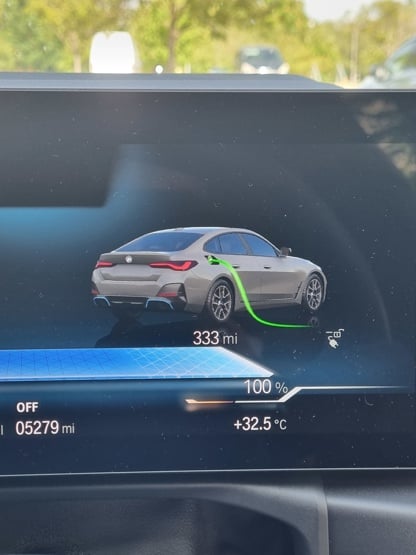
Now, I must point out that I’m not a particularly efficiency-focused driver. My belief is that if you’re spending £60k on a car then you should be able to drive it as such. With more than 2,500 miles covered, my long-term consumption stands at 3.5mi/kWh. While most of these miles have been done in warmer months, it’s still a mightily impressive result. For comparison, our Audi Q4 e-Tron managed 3.3mi/kWh.
However, a trip to the Goodwood Festival of Speed – a round trip of 304 miles – seemed like the ideal opportunity to put the i4’s range to the test. Setting off with 99% charge and a promised 320 miles, I headed south from Peterborough allowing the car’s excellent adaptive cruise control and lane centring to do most of the hard work. Upon arrival, with a trip average of 4.1mi/kWh achieved, a rather dubious 204 miles was promised from the remaining 55% of charge.
After setting the sat nav for the trip back, the car automatically adjusted its range expectation to a more realistic 155 miles. Just enough then.
The first third of the journey, from Chicester to the M25 is almost all uphill, or at least it seemed. Still, maintaining motorway speeds, I was soon halfway home with a range buffer of around 10 miles. While I was confident the car would make it back, by bladder wasn’t quite up to the job. A brief comfort break was needed, so I headed into South Mimms and decided to plug in to a rapid charger. Six minutes later I was back on the road - having boosted the car’s range by 60 miles for about £6. While a charge wasn’t strictly needed, it did mean I was able to use the car later that day for another journey and it had no impact on my journey time.
So, the i4 will comfortably cover length trips with little range anxiety. What I find most impressive is that it requires no adjustment to driving style to return reasonable efficiency. I;ve driven plenty of EVs that burn through power at a worrying rate when you cruise at motorway speeds, but the i4 has no such problem. I keep the aircon on and the car in either Comfort or Sport mode. I don’t have to sit at 55mpg behind lorries and I don’t have to worry that overtaking a slower vehicle will cost me precious miles. It’s the most stress-free EV experience I’ve had.
Engineering or witchcraft?
It wasn’t until I parked the BMW i4 next to a 4 Series Gran Coupe, the other day, that I realised just how alike they are. The two cars share a body but seeing them side-by-side made me realise just how good of a job BMW has done at converting it to electric.
The basis for the i4 is the Munich car maker’s CLAR platform, which underpins the 3 and 4 Series. Of course, some pretty substantial modifications have been made; such as the inclusion of an 83.9kWh battery and electric motor in the rear axle.
Somehow, let’s call it witchcraft - I think BMW refers to it as ‘engineering’ – the i4 manages to squeeze everything in with no loss of passenger of luggage space. What’s more, there’s no negligible impact on driveability either.
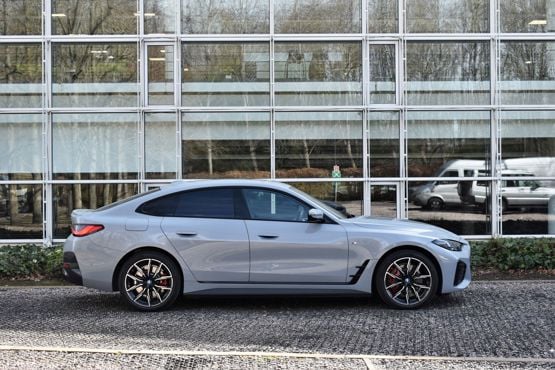
Now, we’re not saying the i4 drives exactly like a 4 Series. In some respects, its actually better. Firstly, you’d need at least an M440i to go as quickly and, despite a weight penalty of around 400Kg, the i4 handles competently. Part of this is due to its centre of gravity being more than 50mm lower than in a 3 Series. BMW has also added air suspension at the rear, to help manage the extra weight without resorting to rock hard springs.
What does this mean for company car drivers? Well, it means the i4 feels very much like a ‘conventional’ sports saloon. Why does that matter? The truth is lots of EVs, or at least those with sub-six-figure price tags, are a bit benign and underwhelming. Aside from punchy performance, most EVs are set up for safe predictable handling, ride on ‘eco’ tyres and struggle to harness their mass when driven enthusiastically.
The i4 sets a new benchmark. It doesn’t have a high-riding SUV-like driving position, it doesn’t lean into corners and leave you questioning whether or not the front tyres are going to steer you in the intended direction. The poise and balance are remarkable, considering the car started life as a ‘regular’ petrol-powered one. BMW started its electrification journey with the bespoke-built carbon-fibre shelled i3. The i4 is less advanced in that respect, but no less impressive.
BMW i4 eDrive40 M Sport joins our fleet
The prospect of going fully-electric is still daunting for many, not least myself. I’ve driven plenty of electric cars in the last few years, many of which are up to the job. But, I’m still nervous of range and I don’t want to lose out on driving engagement – basically, I don’t want to compromise.
Plug-in hybrids have served me well thus far, but times are changing, petrol is getting dearer and the BIK savings are not to be overlooked. Luckily, I’ve managed to find a way to ‘cheat’ the transition to electric. It’s called the BMW i4.
When I first drove the i4, last year, I was amazed at how much like a ‘normal’ BMW it felt. It’s not heavy, or wallowy or complicated. It doesn’t lack character or capability. If you nervous about making the switch – the i4 has your back.
Fleet News Awards judges agreed. The i4 picked up two trophies this year: Best Premium Car and Best Zero Emission Car (over £40,000).
Officially the car’s range is 355 miles, which eclipses just about everything at this price point. EV Database suggests 290 miles is achievable in the real-world, and that’s about on par with our experience so far.
My home charger pumps out just 3kW, so overnight charging isn’t always going to cut it and I’ll be utilising the car’s 200kW charging capability at a local public rapid charger for successive long trips. Here, I can add 100 miles of range in 10 minutes.
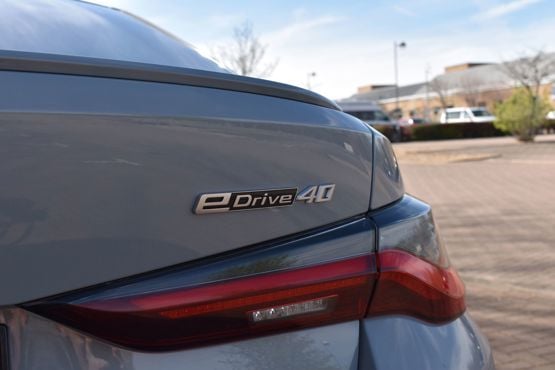
Our i4 is the eDrive 40 variant, specified in M Sport trim. It uses a single electric motor, which develops 340PS, paired with an 83.9kWh battery. Prices start at £53,425 and our car comes in at £62,295 as it’s loaded with options.
Over the coming months I’ll be putting the i4 through its paces to see exactly how capable it is and whether it lives up to my initial hype as it becomes my daily driver.
Specs
| Manufacturer | BMW |
| Model | 4 Series |
| Specification | 4 Series i4 eDrive40 Gran Coupe 0.0Elec 83.9kWh 340 M Sport Tech Pro Auto 22.5MY |
| Model Year | 0.00 |
| Annual VED (Road tax) | £0 |
| BIK List Price | £59,325 |
| CO2 | N/A |
| BIK Percentage | 2% |
| Insurance Group | N/A |
| CC | N/A |
| Fuel Type | Electric |
| Vehicle Type | Premium family car |
| Luggage capacity (Seats up) | 5litres |
Running Costs
| P11D | £59,325 |
| Insurance group | N/A |
| Fuel Type | Electric |
| Cost per mile | 127.78ppm |
| Fuel | 9.46ppm |
| Depreciation | 116.32ppm |
| Service maintenance and repair | 2.00ppm |
Rivals
Info at a glance
-
P11D Price
£59,325
-
MPG
N/A -
CO2 Emissions
N/A -
BIK %
2% -
Running cost
3 Year 60k : N/A 4 Year 80k : N/A -
Fuel Type
Electric



